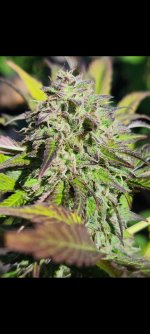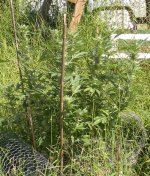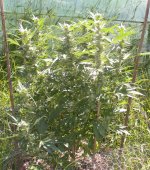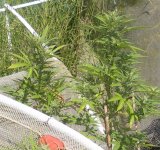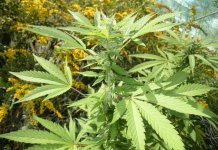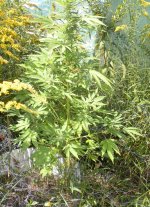Found a couple masses of these caterpillars. And a few adults Don't miss an inspection this year guys! Easy to remove when spotted early.
Parasitic wasps were flying around. They are a beneficial predator for caterpillars sometimes.

 turf.purdue.edu
turf.purdue.edu
By: Doug Richmond

In 2021, the entire Midwest experienced one the worst fall armyworm (Fig. 1A and B) outbreaks in decades, and for turfgrass professionals and enthusiasts it seems like we may be on the verge of another late-season outbreak. These seasonal, but sporadic insects started showing up at the end of August, and adults and egg masses are being reported across the region. The main difference between this year and 2021 is that movement of these insects into the Midwest in large numbers is occurring a little later than it did 3 years ago. Both the likelihood and severity of turf damage hinges on the short and mid-term forecast.
Cooler temperatures have likely slowed development over the last week, but the medium-range forecast is calling for warm, dry conditions over the next week meaning that development of fall armyworm eggs and caterpillars is likely to progress at a steady pace. The notable lack of rainfall in the forecast can set up conditions favorable for damage and slow recovery.
As their name implies, fall armyworms usually show up in the late summer and fall in this part of the country. These insects remain in subtropical climates for most of the year, but hurricanes, tropical storms, and weather fronts sweeping northward this time of year can carry enormous numbers of adults into the interior of the continent, sometimes raining fall armyworms over the entire Midwest and Northeast. Once they fall out of the sky, those adults lay eggs in masses on vertical objects including, signage, light posts, the sides of structures and even the flags marking golf holes (Fig. 2). When enough egg masses are laid in close proximity to one another, the resulting larvae (Fig. 3) can be so numerous that they eventually overwhelm surrounding turf, chewing it to the ground (Fig. 4).
Parasitic wasps were flying around. They are a beneficial predator for caterpillars sometimes.

September 12, 2024: Fall Armyworms, Again?
In 2021, the entire Midwest experienced one the worst fall armyworm (Fig. 1A and B) outbreaks in decades, and for turfgrass professionals and enthusiasts it seems like we may be on the verge of another late-season outbreak. These seasonal, but sporadic insects started showing up at the end of August
September 12, 2024: Fall Armyworms, Again?
By: Doug Richmond
In 2021, the entire Midwest experienced one the worst fall armyworm (Fig. 1A and B) outbreaks in decades, and for turfgrass professionals and enthusiasts it seems like we may be on the verge of another late-season outbreak. These seasonal, but sporadic insects started showing up at the end of August, and adults and egg masses are being reported across the region. The main difference between this year and 2021 is that movement of these insects into the Midwest in large numbers is occurring a little later than it did 3 years ago. Both the likelihood and severity of turf damage hinges on the short and mid-term forecast.
Cooler temperatures have likely slowed development over the last week, but the medium-range forecast is calling for warm, dry conditions over the next week meaning that development of fall armyworm eggs and caterpillars is likely to progress at a steady pace. The notable lack of rainfall in the forecast can set up conditions favorable for damage and slow recovery.
As their name implies, fall armyworms usually show up in the late summer and fall in this part of the country. These insects remain in subtropical climates for most of the year, but hurricanes, tropical storms, and weather fronts sweeping northward this time of year can carry enormous numbers of adults into the interior of the continent, sometimes raining fall armyworms over the entire Midwest and Northeast. Once they fall out of the sky, those adults lay eggs in masses on vertical objects including, signage, light posts, the sides of structures and even the flags marking golf holes (Fig. 2). When enough egg masses are laid in close proximity to one another, the resulting larvae (Fig. 3) can be so numerous that they eventually overwhelm surrounding turf, chewing it to the ground (Fig. 4).


